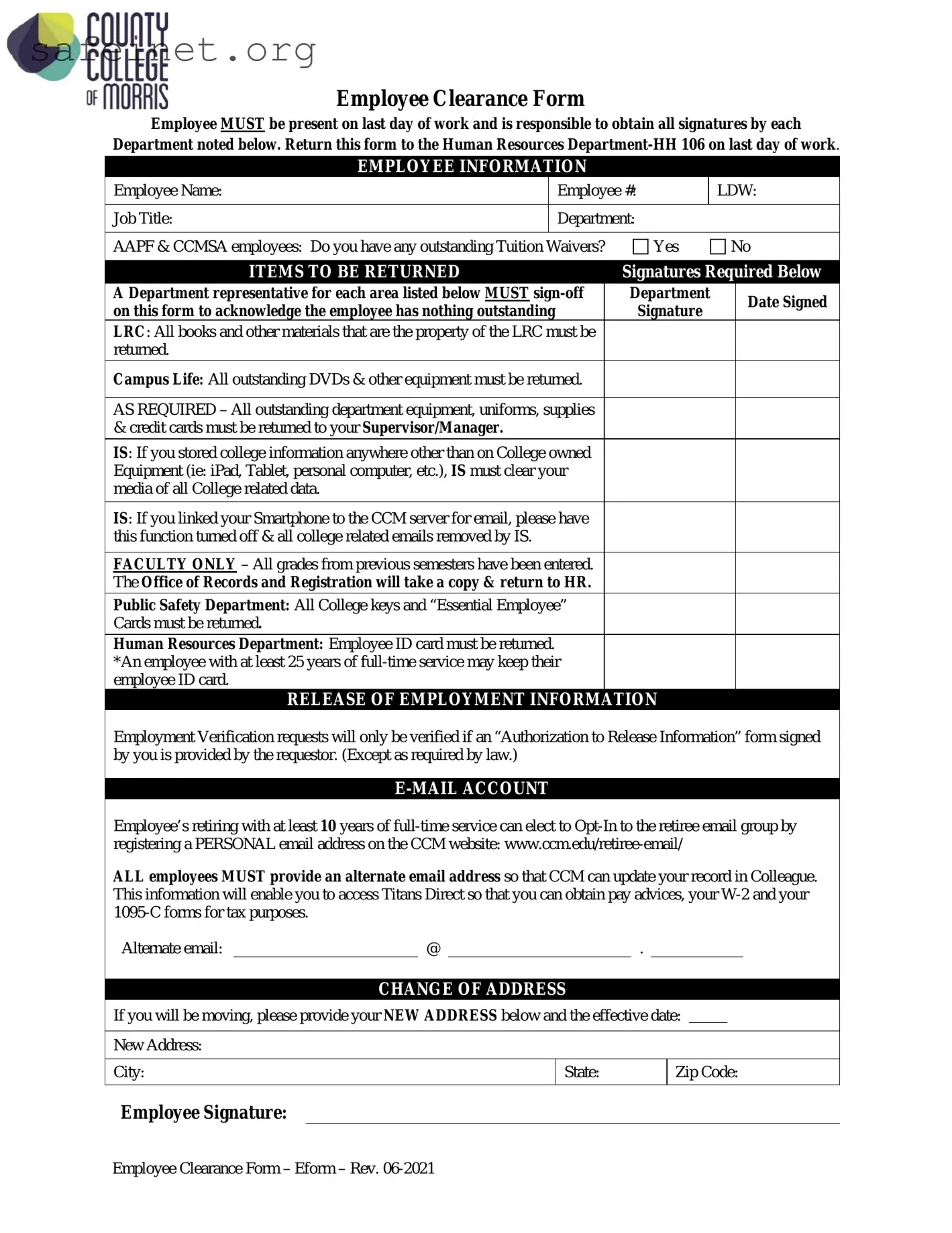The Exit Interview form is quite similar to the Employee Clearance form. Both documents serve the purpose of gathering information as a worker exits an organization. The Exit Interview typically includes questions about the employee’s experience at the company. It also requires the employee's signature to confirm their responses, similar to the clearance form, where signatures from department representatives are necessary to acknowledge the return of company property.
The Final Pay Authorization form parallels the Employee Clearance form as well. It ensures that all financial matters are settled before an employee leaves the organization. Employees must sign this form, confirming that they have received all due pay and benefits. Like the clearance form, the Final Pay Authorization also involves verification from the Human Resources department to finalize everything correctly.
The Non-Disclosure Agreement (NDA) bears similarities to the Employee Clearance form due to its focus on confidentiality. When an employee signs off on the NDA, they acknowledge their responsibility to protect the company's sensitive information. This aspect is similar to how the clearance form requires employees to ensure that no confidential documents or company property are outstanding before leaving.
The Resignation Letter serves a comparable function to the Employee Clearance form by documenting an employee's decision to leave the organization. Employees must submit a resignation letter, which often includes their last working day and any relevant details. Just as the clearance form requires specific actions on the final day, submitting a resignation letter initiates the process for both the employee and the employer.
The Employee Benefits Termination form is akin to the Employee Clearance form since it formalizes the ending of certain employee benefits. Employees must complete this form to confirm they understand the impact of leaving, similar to how the clearance form ensures employees return all company property. Both documents require signatures for verification purposes.
The Last Will and Testament can resemble the Employee Clearance form in certain contexts. While the two documents serve different purposes, both involve finalizing aspects of an individual's relationship with a company or estate. The process of having a will witnessed and signed echoes the requirement of obtaining signatures on the clearance form, emphasizing finality in both cases.
The Return of Company Property Receipt is directly related to the Employee Clearance form. It is a document that specifically tracks the items being returned to the company. The clearance form also includes a section on items to be returned, ensuring that all aspects of property retrieval are documented and acknowledged by relevant departments.
The Authorization to Release Information form aligns with the Employee Clearance form as both deal with the proper handling of an employee's information. Just as the clearance form certifies that an employee has returned all materials, this authorization requires the employee to give explicit permission before any personal information can be shared. Both forms emphasize the need for clear communication regarding sensitive data.
The Performance Evaluation summary may demonstrate some similarities as well. While this document assesses an employee’s work during their tenure, it can be reviewed as part of the exit process. Just like the Employee Clearance form, it requires signatures from supervisors, ensuring that all aspects of employment are addressed before final departure.
Finally, the Tax Withholding Certificate serves a function that is somewhat compatible with the Employee Clearance form. When an employee leaves, they must ensure that their tax information is correct and final, similar to how the clearance form ensures that all company obligations are met. Both documents involve confirming details that play a role in the employee's record-keeping as they transition out of the organization.

